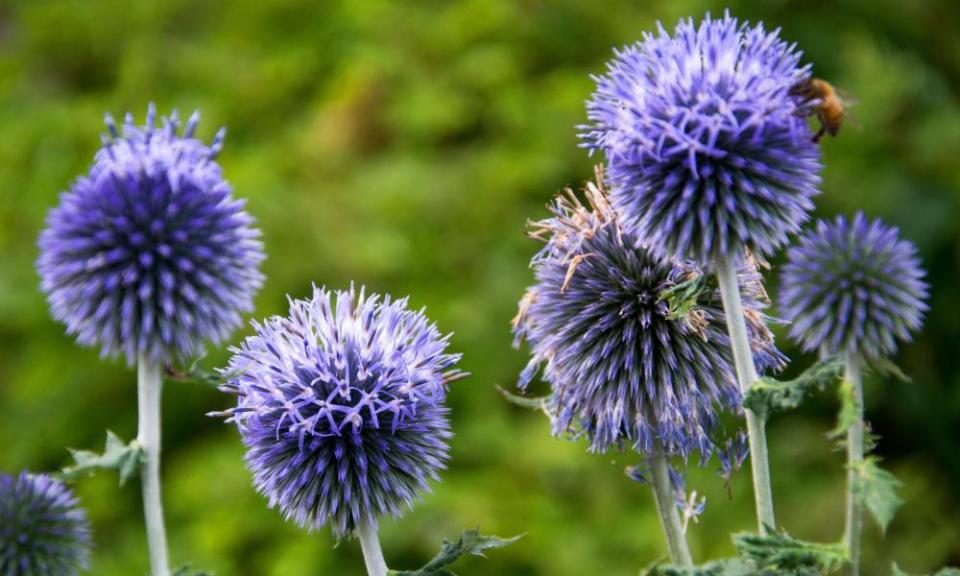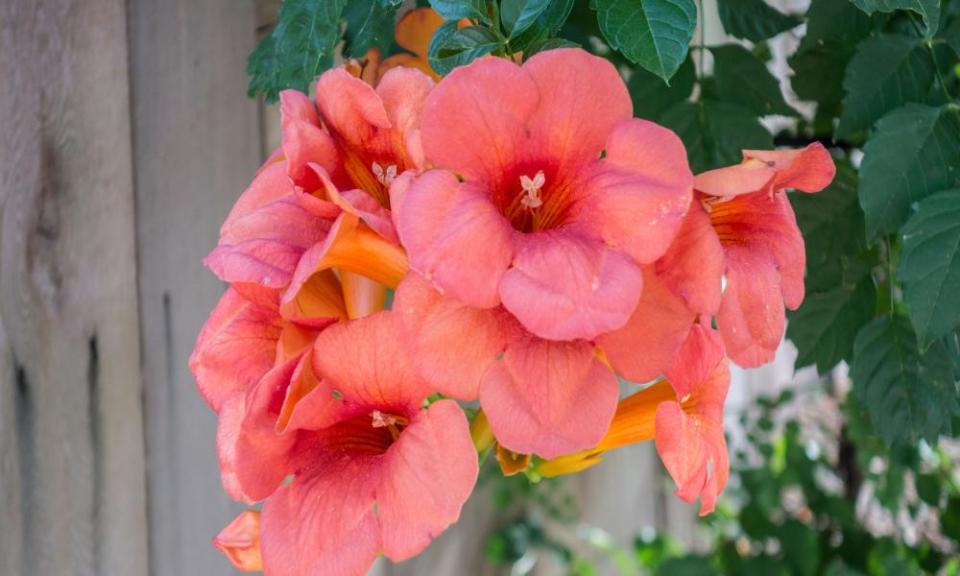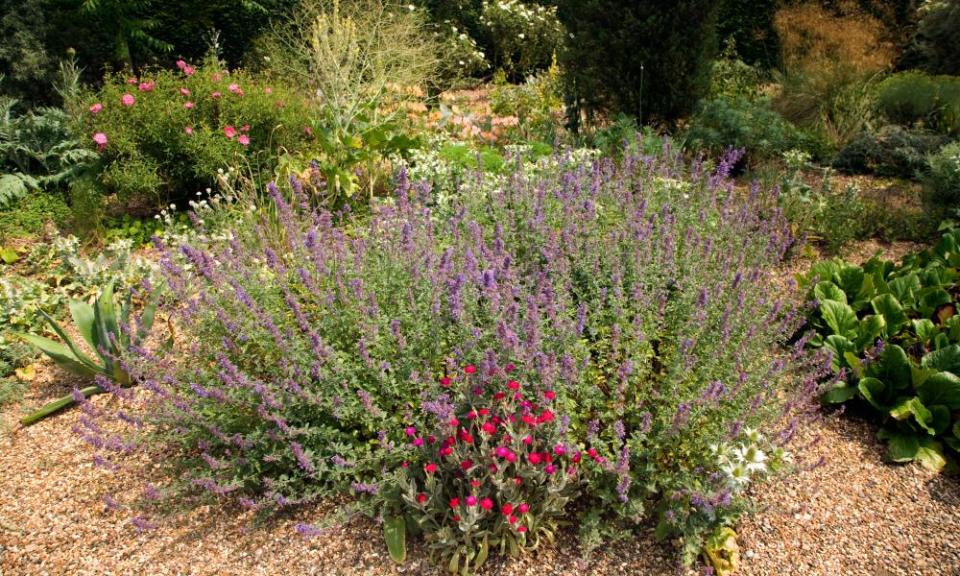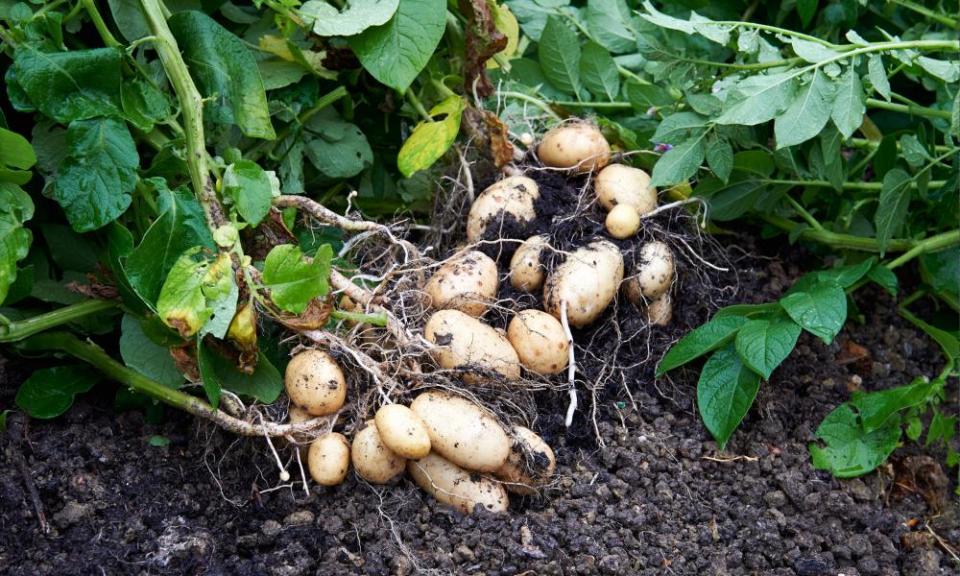Spring into action: five easy, affordable gardening tasks now winter is over

My endeavour to keep our new small Hampshire garden low-cost and environmentally sound continues. The guiding principle of “home-sown” rather than nursery-grown plantings has been mightily tested by ever-tempting spring stock lists, and I’m still searching for a thrifty yet water-based weatherproofing paint for the boundary fence. But rich compost has appeared like manna from the composter, and the makeshift cold frame has done its job, bringing frost-vulnerable sowings through the short, dark days and out into the vernal sunshine.
The weather has not been easy, with winter delivering the lamentable combination of sharp cold spells broken by unseasonably mild temperatures and widespread thaws, which has led to curious patterns of growth – did anyone else’s bearded irises confuse January for June? During hard hoar frosts I watched our almond tree through clasped hands, and surveyed my autumn planted cuttings almost daily.
Similarly, the definition “hardy annual” has never felt so flimsy, as the feathered foliage of my wild carrot seedlings crisped and then drooped. Nonetheless, most things thankfully survived, and with the green shoots of spring comes renewed determination and drive, so here are the garden tasks I have set myself for the coming months, by way of inspiration for those similarly inclined towards thrift, resourcefulness and provision for nature.
Create habitats for creatures

A whopping garden spider – a mountain of a spider – scuttled from the decking as I plied it all up a few weeks back. And then another, and another. I have nothing against decking, but going rotten and taking up precious space, it needed to go. Nonetheless I hadn’t fully appreciated its provision of habitat: among the cobwebs and decaying wood beneath were all manner of sheltering creatures. It was a reminder that when hastily removing unwanted features from our newly acquired gardens we can neglect well-established cohabiters. And there is a biodiversity crisis on. So I have enacted a standard of “retention and reuse” of materials wherever possible, setting aside wood from the decking, sawn and piled up, to decompose (for the likes of centipede, ground beetle, spider, a frog, if I’m lucky) and stacking – rather than disposing of – bricks, stones and paving slabs for habitat (mason and leaf-cutting bees) and future garden projects, the priority being a more permanent stone cold frame.
Sow for the future

The seed-sowing frenzy of early spring can reach anxiety-inducing levels as social media floods with smug captures of speedily developing hardy annual seedlings. Instead, there’s something very calming about sowing perennials: they may not bloom this year, but will make good-sized plants for next summer and beyond. No pressure to sow early (and actually far better sown late April into May) and considerably cheaper than pot-grown plants. Among the perennials I’m sowing for longevity, beauty and provision for pollinators are lesser calamint (Calamintha nepeta), anise hyssop (Agastache foeniculum), blue globe thistle (Echinops ritro) and great masterwort (Astrantia major). For more perennial seed inspiration, Chiltern Seeds offer a wide range for differing sites, soils and levels of sunlight.
Cover the walls

Like in the majority of small terrace gardens, fencing can provide a considerable amount of vertical growing space – undoubtedly more than the flower borders and pots put together. So experiment with climbing plants, making use of naturally varying light and shade levels to try new as well as long-coveted varieties. The hardy annual climbers I’m spring-sowing include sweet pea, “sunset” runner bean (for their rare peach-pink flowers) and the cup-and-saucer vine (Cobaea scandens); the shrubs, however, I intend to pilfer. One of the most effective means of propagation for woody climbing plants (jasmines, ivies, vines etc) is “layering”, where a flexible shoot of a mature plant is bent and pinned to the ground during spring. Making an incision where stem meets soil encourages new roots to form, after which the shoot can be severed and transplanted. So ask around friends and family for climbers, as they might be available: I’ve begun with a climbing hydrangea and Virginia creeper – I’m now seeking a friend who’ll let me at their trumpet vine …
Choose drought-tolerant plants

Beneath the removed decking is a raised platform area, brick-edged and topped with shingle. As this is the most sunlit part of the garden, I envision a table and chairs and icy glasses of gin among leafy greens and abundant flowers. But it will be a thirsty spot for plants, exposed for much of the day and composed of a stony, free-draining soil. Summer extremes of heat and drought are putting increasing pressure on all our gardens, yet the sustainable approach demands watering-can restraint. So I have decided to lean into the makeup of the site: rather than enrich the soil, I am adding some of the crumbled stone, paving and brick set aside in winter to the existing soil to provide a substrate fit for gravsuch as helichrysum, nepeta, cistus and juniper. Beth Chatto’s gravel garden in Essex is the place to be wowed by seldom-watered Mediterranean style planting, its nursery a treasure chest of drought-tolerant plants. Once the site is planted up, I will return the shingle as a suitable top mulch.
Plant potatoes

My interest in gardening probably began with potatoes, pulling golden nuggets from the earth of my grandfather’s garden, aged six or seven, was pure enchantment. I have grown them at almost every opportunity since, and am continuing the spring ritual here. But whether you enjoy eating them or not, the potato’s utility goes beyond the kitchen: on new, neglected or even compacted soils, potato plants can help loosen ground, preparing it – relatively graft-free – for future plantings. They are also an effective means of engaging young children in the garden: tactile, easily planted (effectively giant seeds) and thrilling to harvest. To both these ends, I have earmarked a sunny spot for some robust maris pipers, getting them in the ground for Good Friday on 7 April, as folklore dictates. Browse organic and heritage seed potatoes at Potato House – its also offers grow bags and patio packs for smaller spaces. My sister impressed the family WhatsApp last year with a photo of shiny potatoes unearthed from her little 50-litre raised planter, with a proud toddler beside his harvest.


